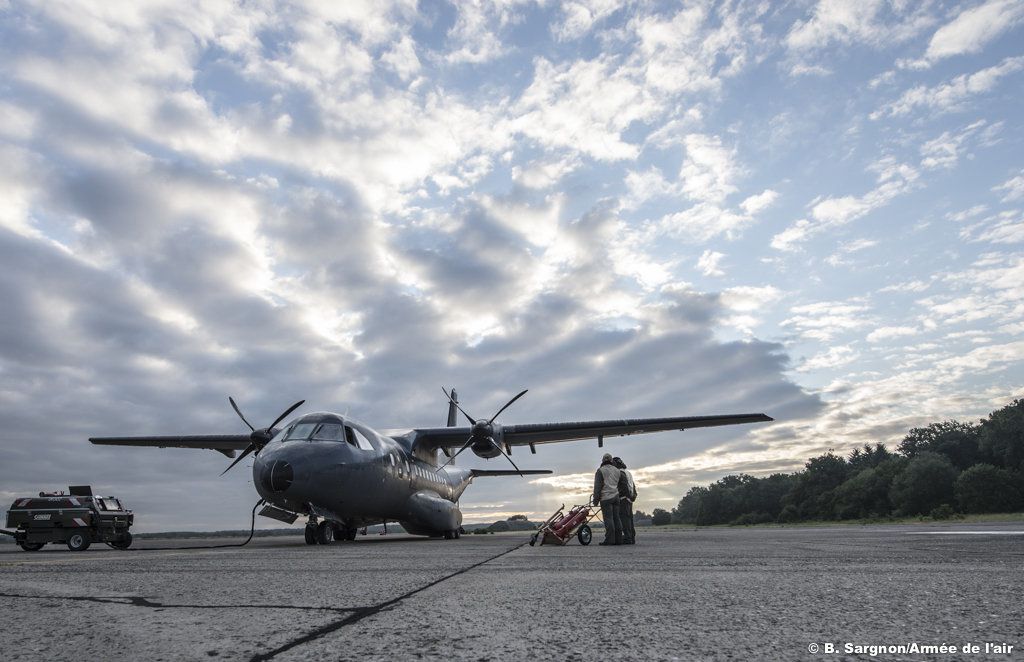
May 16, 2011 By Leon Engelbrecht, defenceWEB Editor – defpro.com
Project Saucepan, the South African Air Force's programme to replace its 68-year-old Douglas C47 Dakota aircraft in the maritime surveillance role has been “pulled to the left”. SAAF chief Lieutenant Carlo Gagiano says the project, now at staff target phase, is both “urgent and important”.
The air boss was speaking to journalists at the SAAF's annual air capability demonstration at the Roodewal bomb range in Limpopo yesterday. He would not be drawn on budget, numbers or platforms, but did not vigorously deny a figure of four. Asked about the size of the preferred platform, he said he had his own views. Pressed whether it would be something the size of an Airbus Military CASA 235, Gagiano chuckled and said he was looking at “something smaller, actually,” in the class of the Beechcraft King Air 350, used by several air forces. The SAAF also operates two King Air 200s and one King Air 300 in the light tranport role. Some 3550 King Air's have been built since 1972. The wikipedia puts it cost at between US$5.24-7.57 million each in 2009 base prices.
Speaking about Operation Hopper, the South African National Defence Force's maritime security operation off the northern Mozambique coast, Gagiano said the burning need was for airborne sensors. “We have a gap there we have fill very quickly,” the general said. This is why Saucepan is “so important” and “will make such a big difference”.
“There is no doubt about it. These aircraft will give us a massive boost and will make a major difference to our operational capabilities. Not only will they be used in anti-piracy roles, but also to combat poaching and the detection of war threats. Because of outdated maritime surveillance equipment, this project is an urgent priority,” he said.
Gagiano continued that he would like to see the aircraft permanently based along the coast – with appropriate resources an perhaps also crewed by the SAAF Reserve Force. Richards Bay, Durban, Port Elizabeth and Cape Town were named in that connection.
The SAAF received its first C47s in 1943 and they were employed as transport in the Italian campaign of World War Two as well as for ferry duties in the Mediterranean theatre. After the war, the aircraft were deployed to support the Berlin Air Lift. Between June 1948 and May 1949 some 1.5 million tons of cargo was carried into the blockaded city aboard some 200 000 flights.
In the early 1990s about 11 were modernised with, inter alia turboprops replacing the piston engines. The aircraft remain in service with 35 Squadron, based in Cape Town, with medium transport as well as maritime patrol duties. In the latter role it replaced the Avro Shackleton MR3, the last purpose-designed MPA, in SAAF inventory from November 1984.
Brigadier General Tsoku Khumalo, the SAAF's director transport and maritime told the defenceWeb maritime security conference in Cape Town in October 2009 that the SAAF has a requirement for five specialised Maritime Patrol Aircraft (MPA) and eight cheaper general-purpose Maritime Surveillance Aircraft (MSA). At the tie he said the new aircraft would have to be cost effective, sustainable, appropriate and offer a growth path. It will need to be capable of inshore, coastal and deep-sea exclusive economic zone patrol as well as search-and-rescue (SAR) work. To support naval operations they will also require an ability to engage in antisubmarine and surface warfare.
The new aircraft would require the ability detect, track, classify and identify surface targets and in wartime to engage the same with onboard weapons, he added. Khumalo noted the SAAF realistically required 12 to 14 MPAs but these were very costly and the budget needed likely prohibitive. Other having a maritime role the aircraft also needed to have a transport function and would also replace the C47, CASA C212 and C235 aircraft; Khumalo being keen to reduce the number of platform types in use in the SAAF transport environment.
While at pains to avoid mentioning manufacturers or aircraft models for fear of creating perceptions, Khumalo did acknowledge that to have the range for maritime operations – the SA search-and-rescue region is some 17.2 million square kilometres in size – and to have a useful cargo capacity the aircraft would have to be of the size and capability of the Casa 295. However, extreme long range SAR operations over the sea would remain the task of the Lockheed Martin C130BZ Hercules.
It is not yet clear how the new developments affect the plan put forward by Khumalo.



/image%2F0547456%2F20150626%2Fob_a82034_14-juillet-cockpit.jpg)
/image%2F0547456%2F20150626%2Fob_9097c9_14-juillet-cockpit.jpg)
/image%2F0547456%2F20150626%2Fob_f9a34e_casa-en-vol.jpg)




